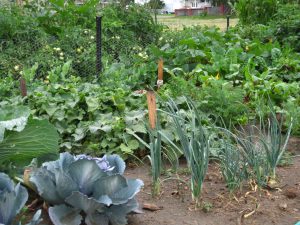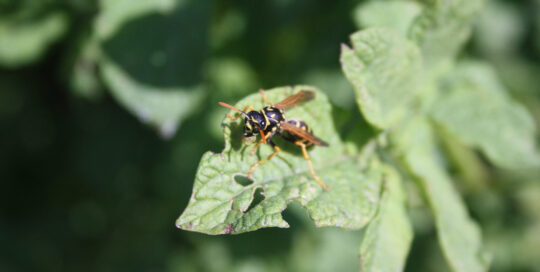During a Drought, Be Proactive Against Pests
Views: 3459

The other day I interviewed a manager at a local garden nursery, and she brought up a point I hadn’t considered for a while. She said they haven’t carried birch trees for several years because of the drought situation we experienced that resulted in many birch trees failing.
As she pointed out, it wasn’t so much that the trees died because of the lack of moisture, but they were stressed enough to make them susceptible to pests, particularly the birch borer. And when we look at our surrounding forests, evidence of the devastating effect of the mountain pine bark beetle demonstrates what happens when trees are stressed.
Controlling Pests During a Drought
It’s no secret that healthy plants are best able to fend off an attack from pests, but undue stress makes it tough to keep ahead of them at times. It’s one thing to not provide adequate nutrition to the plants or to plant them incorrectly, but not having enough natural water is something a lot of us can’t control.
Drought is a fact of life in many parts of the country, which is why we need to be aware of what we can do to maintain the health of our plants, shrubs and trees to give them the best chance of survival during the rough periods.
Soak Plants Deeply
Be judicious with your water by soaking the plants deeply at root level. Don’t go out there with a hand sprinkler and douse the leaves. It’s a lovely thing to do in the cool part of the day, but it doesn’t do your plants any good. Plus, if you have water droplets on the leaves when the sun really heats up, it acts like a tiny magnifying glass and can burn the plants. No kidding.
Mulch Well and Often
Mulch as much as you can. I use a lot of straw during particularly dry years. (Who am I kidding? I use a lot of straw every year.) It helps keep the water you do use in place. You can use straw, grass clippings (if you know it’s herbicide free) or compost to protect the soil.
Use Polyculture
Planting different plants together is often beneficial because you don’t have a single variety set up buffet style for hungry pests. It’s a little harder for them to jump to different areas to find the desired cultivar. It’s also handy to utilize plants to shade the ground. Squash plants are fantastic in this regard, and I often plant them with corn to keep the ground cooler (and moister) underneath their large leaves.
Have Less Tolerance for Pests
If your plants are in good shape, it’s not a big deal if you have a few aphids on the tomatoes or the grasshoppers nibble a couple of plants. In that case, don’t sweat it. But when you’re dealing with a drought situation, pests are an additional stressor that affects the plant’s health and overall production. Stay on top of them by hand picking or break out the insecticidal soap or diatomaceous earth.
Don’t feed the plants
You don’t want to encourage excessive growth in a drought situation. Reduce or eliminate any fertilizer you use. If you’ve used a time release fertilizer at the beginning of the season, don’t sweat it, but the last thing you want to do is encourage excessive growth in an already stressful situation.
Don’t prune the trees or shrubs
Cutting off branches or limbs adds to the already stressful situation, and increases the potential for disease or pests to attack the plant. Sometimes trees will shed leaves as a self-pruning mechanism to preserve resources, but don’t try to help them.
Gardening during a drought is tough. Everything is scrambling to stay alive, including the pests, so you have to be extra vigilant to keep your plants healthy and away from hungry visitors.
Meet Amy Grisak
Amy is a freelance author and photographer in Great Falls, MT who specializes in gardening, foods, and sustainable agriculture. She provides information on every kind…
Amy's Recent Posts

Looking into the Crystal Ball for a Pest Report








